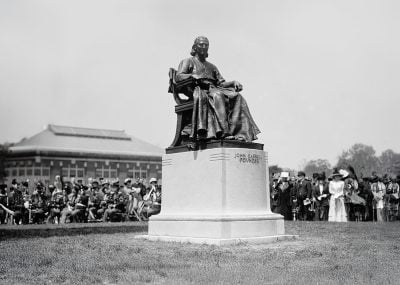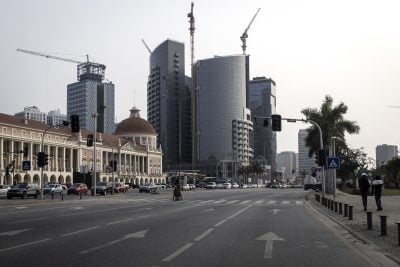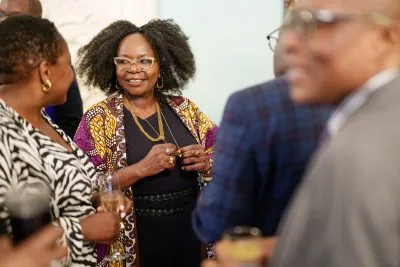There is broad agreement that the event of Marikana, where a number of miners were shot dead by police, will have far-reaching implications on the whole relationship between labour and capital. What does this mean in practical terms?
As the South African mining industry settles into a patchwork of industrial war and peace – rashes of strikes breaking out sporadically in some parts of the sector and agreements being worked out in others – the spectre of Marikana looms as a reminder of the price to be paid of unresolved worker unrest.
The memory of the 44 miners slain in a confrontation with the police has been kept alive by a succession of funerals and memorial services, all well attended and assiduously covered by the media. The next chapter is currently being written, and the working title could well be “How we must ensure that Marikana never happens again”.
The backdrop to South Africa’s latter-day industrial evolution shows a landscape in the throes of change. Workers’ gains in the aftermath of the confrontations at Marikana in the heart of the platinum mining region were of a size seldom seen in South Africa and they have galvanised other miners, not only of platinum but of other commodities as well, to seek similar pay increases and improved conditions. Mining houses, and other corporations, are on the back foot and the scenario of great change in the industrial contract between workers and owners seems already written. At the same time it might also address one of the severe inequalities in a democratic South Africa – the great gulf in wealth distribution.
In this regard, an important dialogue is under way between mine owners (represented by the South African Chamber of Mines) and the major minworkers’ unions, (to a great extent led by the National Union of Mineworkers (NUM)). Amongst other issues, mine workers and mine owners will debate the issues that historically have divided them.
Tide of demands
By the beginning of October the tide of wage increase demands had spilled over the confining perimeter of the extraction sector and was affecting transport and manufacturing. Few walkouts were legal and sent transport operators and mining firms trying to contain the damage by obtaining court interdicts and threatening to dismiss employees who refused to work. But wildcat strike fever swept through the workplaces. Michael Bagraim, a labour law expert and president of the Cape Chamber of Commerce, described interdicts as “an exercise in futility and a blunt instrument to deal with mass hysteria”.
A wave of industrial action, not all of it linked to the mining sector, rolled across South Africa, closing some industrial operations and crippling others. The South African Transport and Allied Workers’ Union said it was pushing for rail and ports workers to join a strike by 20,000 truckers. Some of the worst-hit companies included Anglo American Platinum. The world’s biggest platinum producer stopped operations to ward off escalating violence by wildcat strikers.
AngloGold Ashanti’s Kopanang mine came to a standstill when most of the 24,000 workforce staged a stayaway. Two mines operated by Gold Fields have halted production through illegal strikes. Two weeks later the action spread to its Free State operation.
Other mines to report walkouts were Harmony Gold’s Kusasalethu mine near Johannesburg, Kumba Iron Ore, one of the world’s top 10 producers, Gold One’s Ezulwini Mining Company, Petra Diamonds’ Kimberley, Atlatsa Resources’ platinum joint venture with Amplats, Samancor West Chrome Mines and Village Main Reef’s Blyvooruitzicht gold mine.
Shell SA fuel deliveries around Johannesburg were disrupted by a truck drivers’ strike sparking fears of a petrol drought in the country’s industrial hub, Toyota, Africa’s biggest motor vehicle plant, shut its doors in an illegal pay strike.
The Council for the Advancement of the South African Constitution (CASAC), a powerful but low-profile organisation of South African intelligentsia, in a rare public pronouncement, said it believed that “Marikana represents a turning point in South Africa’s post-apartheid history. The question is: in what direction will we now go”? The organisation fights for the promotion of socio-economic rights, judicial independence and the rule of law, public accountability and open governance.
It affirms the right of workers to strike, associate freely and speak out fearlessly, but a constitutionally-established society “cannot countenance the persistent violence and sense of lawlessness that characterises many public gatherings, strikes and protests. We appeal to all people to exercise the right of assembly without bearing arms and weapons of any kind, and to desist from engaging in acts of violence and intimidation”.
Unions born in blood
South Africa’s labour unions were born in blood and violence. In the apartheid era organised workers’ rights were suppressed by police using intimidation, beatings and gunfire. It’s now obvious that the culture lives on. The spinoff truckers’ strike left one person dead and trucks set alight and left burning on the highways.
“When democracy dawned, there were expectations that the growth of workers’ rights, unionisation and post-apartheid labour legislation would do away with strike violence and the high levels of mass militancy that had sustained it,” says Liza van Wyk, CEO of AstroTech, a skills development organisation in labour relations and law.
“But this has not happened. For the workers who have tasted the power of democratic elections, militancy has grown as they demand more rights and improved living wages. But police are either seen as a heavy-handed and coercive force acting on behalf of business and government interests to suppress strikers, or as a neutral force trying to keep the peace. Also, the intimidation, assault and murders of strike-breakers has been a persistent feature of many large-scale strikes. So what is the way forward? How are we going to avoid another Marikana?”
For Johanette Rheeder, director of a labour law practice, it’s all about finding a foothold on the seemingly unbridgeable gap between the demand for more pay and employers’ offers. “One can honestly ask whether there is a lack of common understanding and failed relationships between employers and employees in South Africa?”
She also asks how much individual trade union ambitions had to do with the way the crisis skidded dangerously on the brink, and how their drive to attract members could have led to difficulty in fulfilling promises to workers being made.
“Naturally speaking, the more members a union has, the more powerful it is and the more effective it becomes in the power play with the employer or employers in an industry,” says Rheeder. “So union officials and shop stewards never lose sight of their collective power: its representivity with the employer. If it loses members, it stands to lose its representivity, giving the employer the right to cancel its collective agreement or to even cancel recognition altogether.
“Minority unions will fight for majority status – more members – which is often coupled with promises that are not easy to fulfil, such as an income of R12,500 ($1,400) (the monthly wage demanded by rock drillers). Expectations are created with members and the ‘fight’ is layered between the unions among themselves for membership and with the employers for better conditions,” she says.
Rheeder points out, “the purpose of a trade union is not only to be in an adversarial relationship with the employer. In order to achieve the purpose of the Labour Relations Act, it must also seek labour peace and engage in joint and meaningful consensus-seeking processes.”
Increasingly, the need is becoming more urgent for a rethink in the financial relationship between mine owners and their investors.
“Institutional investors are bound by their fiduciary duties to act in the best interests of their clients and to maximise profit. These were the key principles governing investment management for many years,” maintain Malcolm Gray and Bonita Meyersveld, asset manager and associate professor in legal studies respectively. “But increasingly, the interpretation of the ‘best interests of clients’ is changing. Both international bodies and South African law require investors also to embrace a broader understanding of fiduciary duties and take into account material aspects that may affect value and investment decisions, including considerations related to environmental factors, social issues and good governance.”
Marikana has raised provocative questions. “In the coming weeks, we urge the investors and shareholders to account for their role in the events of the past weeks,” say Gray and Meyersfeld. “There is a deep emotional link to what is increasingly considered a sunset industry. The investment community needs to contribute by identifying the steps needed to mitigate harm, respect human rights and develop a constructive, socially and financially relevant extractive sector in South Africa. Society expects nothing less.”
Want to continue reading? Subscribe today.
You've read all your free articles for this month! Subscribe now to enjoy full access to our content.
Digital Monthly
£8.00 / month
Receive full unlimited access to our articles, opinions, podcasts and more.
Digital Yearly
£70.00 / year
Our best value offer - save £26 and gain access to all of our digital content for an entire year!

 Sign in with Google
Sign in with Google 




